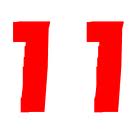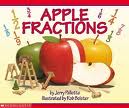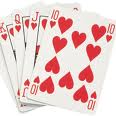Yesterday, I read an excellent article, “Pennsylvania Kids Deserve School Choice,” in The Wall Street Journal. Written by Anthony Hardy Williams, an African-American legislator in Pennsylvania, who is running for governor, the article appeared on the op-ed page of the Journal.
Mr. Williams argues President Obama’s $4.35 billion Race to the Top program will not improve public education in and of itself. Should Pennsylvania be awarded a $400 million grant, Mr. Williams states this amount would represent “less than half of 1% of the $23 billion spent annually” in Pennsylvania’s public school system, a paltry “$56 more per child.”
Believing competition among schools improves the quality of education, Mr. Williams advocates school choice. School choice would allow not only public schools but charter, magnet, private and vocational schools to compete for “a piece of the $23 billion” spent annually in Pennsylvania’s public school system.
Some might wonder whether school choice is in fact a legitimate option. According to Mr. Williams, the Supreme Court ruled in the 2002 case of Zelman v. Simmons-Harris that school-choice programs are constitutional. This ruling by the court has “the potential to fulfill the promise of Brown v. the Board of Education and bring true equality to education.” However, there are those who oppose school choice. The teachers union argues that what ails the public schools, particularly those in the inner-city, isn’t lack of competition but rather adequate funding. “This is a myth,” Mr. Williams says.
Apparently, Pennsylvania spends an average of $16,462 per student. Yet if a private or charter school were to spend this amount on a student and not produce results, parents would remove their child from the school and that school would ultimately fail. “But parents don’t have the option of withdrawing a child from a failing public school,” Mr. Williams explains. “Today’s system permits failing schools to continue, penalizing less fortunate children.”
In Mr. Williams’ case, his mother, a public school teacher, alarmed by the unsafe neighborhoods her son traveled through on his way to school, saw to it that he got a scholarship to a private school.
Parents should have the right to choose the best school for their child. How can we call ourselves a free country when we deny parents this fundamental right? Yet our legislators in D.C. including President Obama send their children to private schools. Indeed, would Mr. Obama be president had he not attended the prestigious Punahou school in Hawaii? Would he have received the same quality education in Hawaii’s public schools? His mother like Mr. Williams’ chose to opt out of public education for her son.
Many African-American mothers email me, telling me they opted to homeschool rather than send their children to these failing inner-city schools. If we do not give parents school choice, the achievement gap will continue to widen.
Were I living in Pennsylvania, Mr. Williams would have my vote. Anthony Hardy Williams should be applauded for his courageous stance. In several television interviews, I’ve heard Geoffrey Canada support school choice. Bravo to both men for supporting families and defending their right to choose the best school for their child. Education should be about the children.
To read the article in full, google “Pennsylvania Kids Deserve School Choice at The Wall Street Journal.”


